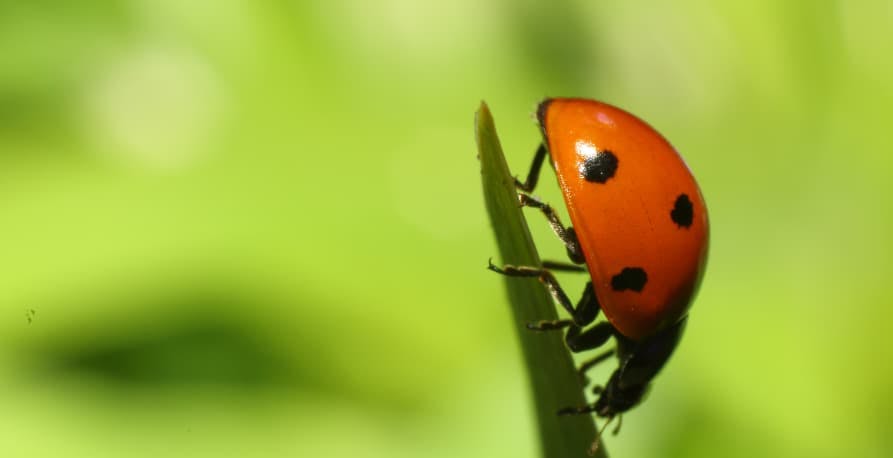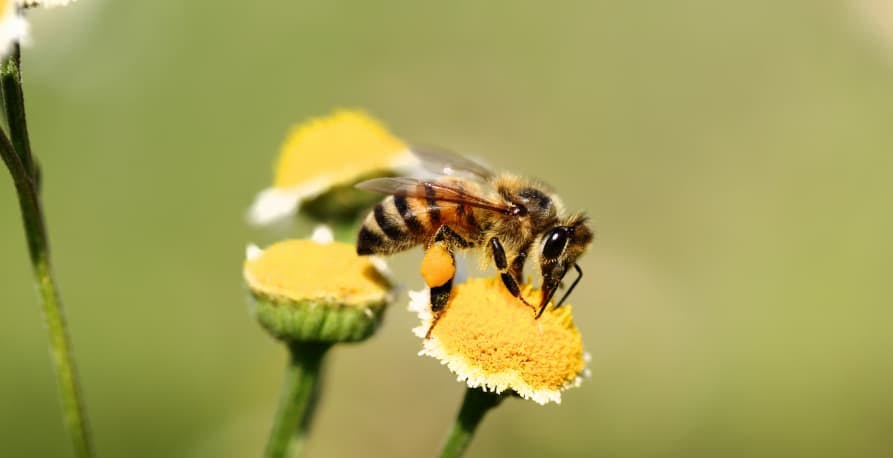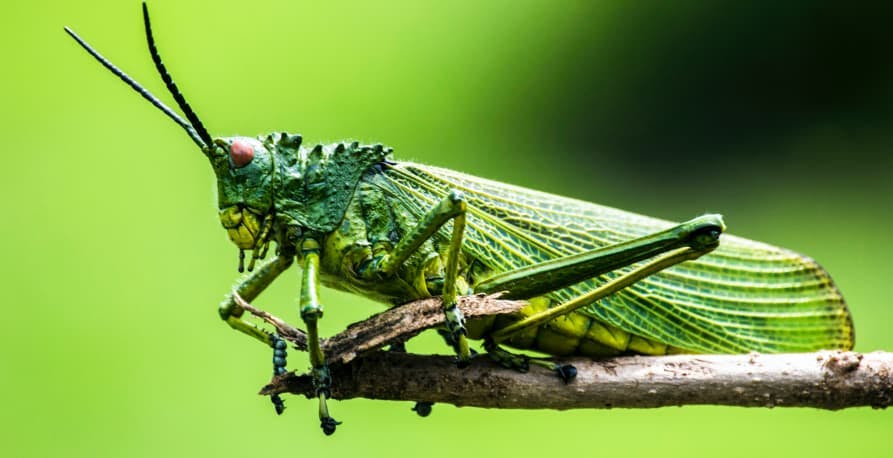
Sustainable Development Goals (SDGs): All You Need to Know
The United Nations has defined 17 goals, aimed at creating a better world. What are these so-called "Sustainable Development Goals" ? Explanations.
ESG / CSR
Industries



It was worse enough when the smoke from the wildfires from Canada made their way to New York City and other U.S. cities – but now it seems that the aftermath of the recent wildfires and smoke are causing a whole new problem: a massive growth in the amount of bugs in places like New York.
Is the population of bugs really increasing following the Canadian wildfires and their wildfire smoke? Is the proliferation of bugs a good or bad thing for the environment, and what can be done to prevent bugs from repopulating at an exasperated rate?
The proliferation of bugs refers to the dramatic increase of bugs on our planet.
Unbeknownst to most, there are around 900,000 different kinds of bugs living on Earth – and bugs make up a massive 80% of the world’s species.
👉 It may be hard to believe that bugs have humans outnumbered by a landslide – but there are around 10 quintillion (10,000,000,000,000,000,000) bugs on the planet as opposed to the estimated 8 billion people on Earth.
The population of bugs can fluctuate for a multitude of reasons, such as the natural life-cycles of bugs, environmental conditions, and the availability of natural resources – both of which the latter two are being affected by climate change.
Bugs can be very sensitive to sporadic weather conditions: such as rapid changes in temperature and precipitation – both of which can have a direct impact on their available food supply. While these conditions can cause them to retreat, it could also result in a momentary population explosion – which is most likely to occur when there are no active predators and there is an abundant source of food and other resources for bugs.

Following the recent wildfire smoke, there have been massive swarms of bugs in New York City – to the extent that the new bugs have created a muted skyline and “clouds” of bugs.
The amount of bugs has been so abnormal to the extent that New Yorker's feared opening their mouths while walking the city out of fear that they would accidentally swallow a colony of these bugs.
However, experts who analyzed the pictures ultimately believe that the bugs that are currently overtaking the “Bug Apple” are harmless – as they are believed to be aphids.
👉 Aphids are mall, soft bugs that live off of the nutrient-rich liquids that are acquired when sucking the juice out of plants. In other words, aphids, the bugs likely to currently be swarming around New York City – want nothing to do with human blood like mosquitoes. Ultimately, the bugs swarming New York City aren’t going to bother you if you aren’t a plant.
However, the alarming number of aphids circling the city still may have to do with climate change – as experts say that the large amount of aphids may be in part due to the mild winter that was had earlier this year. This is because a warmer winter could have resulted in allowing more plants and flowers to grow, providing more food for aphids and ultimately allowing them to multiply faster in such a thriving environment.
👉 Despite the fact the new bugs, or aphids, appeared directly after the infamous wildfire smoke – the bugs in New York City are not likely to be a direct cause of smoke. If anything, the residual smoke from the wildfires is just allowing us to see the large number of bugs with more ease – making it appear that the wildfire smoke has something to do with their take over of New York.
However, the current amount of bugs lingering in New York City does raise something to everyone’s attention – climate change may cause multiple different species of bugs to repopulate and overwhelm our daily lives.

In short, the population of bugs around the world is increasing due to climate change.
Various weather patterns and conditions can allow bugs to thrive more easily and encourage them to reproduce at an unprecedented rate – similar to what we’ve seen this past week in New York City with the massive amount of aphids currently swarming the city.
An example of this is with mosquitoes, as climate change has created warmer temperatures and more humid conditions that allow them to thrive and ultimately repopulate faster. Even more so, it seems that even drastically dry temperatures will encourage mosquitoes to multiply – as drought-like conditions will make them even thirstier for human blood.
Simple things that we don’t realize as human beings are also facilitating the re-population of insects: such as all of the food left we waste, which attracts bugs and provides them with an abundant source of food for themselves.
Also, several species in the world are endangered – many of which could rely on insects as a part of their food chain. With these animals petering out of the planet, it allows less bugs to become food for other living organisms and ultimately allows them to live and repopulate for longer periods of time.
👉 However, it is important to remember that different bug species are likely to grow alongside climate change and others may die out – also as a result of climate change. This could be due to the fact that global warming may destroy their natural habitats, air pollution may kill bugs, or that the use of pesticides will increase.

Bugs aren’t just a nuisance, but they could wreak havoc on pivotal components of our society.
For example, one insect that is also set to multiply in conjunction with growing climate change are mosquitoes – who carry near fatal illnesses and at minimum cause serious health implications for travelers. Mosquitoes threaten the current livelihood of globalization, showing how something as small as an insect could bring our rapid paced world to a halt.
Other insects that could repopulate alongside climate change could have an impact on our agricultural systems – as an outbreak could destroy crops and ultimately lead to food shortages. In fact, it could impact the entire food chain once more – as bugs could destroy plants meant to be fed to livestock.
Apartments and restaurants in cities like New York already struggle with bug infestations, and if bugs are to multiply – this situation could only get worse.
👉 However, it’s important to note that the bugs that are currently swarming the air of places like New York City are generally harmless – and won’t have an impact on imperative systems like agriculture or infrastructure.
Even if bugs may appear to be nothing more than a nuisance to us, the truth is that bugs are essential to life on Earth. This is because bugs are pivotal on the food chain, and essential for our ecosystems to function properly. In a sense, if it weren’t for bugs – the human species wouldn’t be able to survive.
👉 Some of the most threatened bug species include moths, butterflies, bees, and dung beetles – some of which serve as pollinators and help to encourage thriving biodiversity (which has a direct impact on climate change itself).
However, the decline of insect populations isn’t anything new that is happening as a direct result of the Canadian wildfires – but rather something that is being brought to people’s attention following the detrimental smoke. In fact, back in October 2017, studies showed that over 75% of bugs in Germany has decreased over the past 27 years.
Bugs play a big role as not only pollinators, but as decomposers and as food for other living organisms. Ultimately, without bugs, there would be a noticeable imbalance in our ecosystem, and while gross or annoying – they remain pivotal to functional life on our planet.
If bugs are to repopulate and fester across our planet in massive numbers once more, there’s a chance it could help our ecosystems and promote biodiversity – but this isn’t guaranteed to happen if the planet becomes entirely inhabitable by that point.

It’s going to be difficult to keep bugs from multiplying entirely the more that climate change gets out of control, but there are measures that can be taken to prevent certain bugs from breeding as much as they are – such as the aphids currently swarming New York City.
However, there are things that can be done to manage the population of various bug species from getting out of hand – but different mitigation methods will have to be applied for different bug species.
For instance, biological control can be done to prevent bugs from multiplying– such as trying to repopulate certain species that may be more likely to eat those bugs. This could prevent bugs from having as many opportunities to breed and overwhelm everyday human life.
A more common tactic to prevent bugs from getting out of hand is to make use of pesticides throughout the agricultural industry, but this could prove detrimental to the crops themselves – so another way to avoid bugs when growing food is to make use of climate smart farming.
Ultimately, it’s important to realize that most bugs, like the ones currently circling around New York City, are more annoying than harmful to humans – but some bugs could indeed skyrocket in population as climate change continues to worsen. The best method to fight against the bad kind of bugs is to work together to combat global warming and implement the appropriate mitigation strategies wherever possible.
If reading this article about the proliferation of bugs due to climate change has made you interested in reducing your carbon emissions to further fight against climate change – Greenly can help you!
Working to fight against things being aggravated by climate change such as the proliferation of bugs can be difficult, but don’t worry – Greenly is here to help. Click here to schedule a demo to see how Greenly can help you find ways to improve energy efficiency and decrease the dependency on fossil fuels in your own company.
Greenly can help you make an environmental change for the better, starting with a carbon footprint assessment to know how much carbon emissions your company produces.